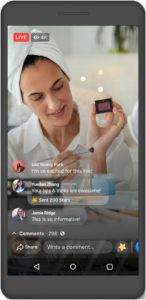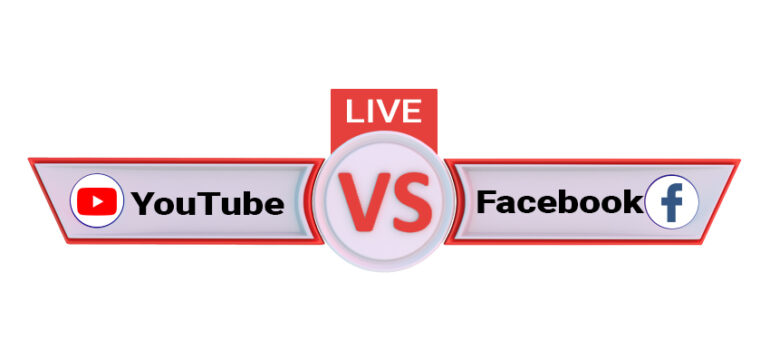Live streaming is one of the most engaging ways to connect with your audience.
They get to see the human side of you, have their pressing questions answered in real time, and interact with you and your content in fresh ways.
It’s an easy decision.
But choosing the best platform to host your live-stream content…well, that’s a tougher one.
Facebook and Youtube – two of the biggest video platforms in the world-wide-web – let users host live streams with some handy features.
But which one is the right fit for your live content?
Let’s Look at different aspects.
Streaming Capabilities
There are certain things that your target audience might want to see when it comes to streaming, such as
- Transcoding, which means your stream can reach different devices.
- Adaptable bit rate, meaning that when a viewer’s internet is slow, the video quality will reduce rather than stop altogether.
- Live rewinds – so that if they arrive late; your audience doesn’t have to wait for the recording to be ready.
Let’s find out how both of these platforms handle this functionality.
Streaming Capabilities for Facebook Live
b. You can stream to lots of different places within Facebook to keep your stream targeted at the right audience: pages, profiles, groups, or events.
c. When you go live, your followers, group members, or event attendees will get a notification, who can interact with your live stream with 7 different reactions or comments.
d. It’s RTMP compatible, meaning you can stream to a range of different channels if you use the right streaming software.
e. Your viewers can’t live rewind or pause, but they can request to join your live stream as a guest.
Streaming Capabilities for YouTube Live
b. Your stream is featured on your channel for your subscribers to find and is searchable through the main YouTube results and dedicated “Live” channel, and you can embed the stream to your own website.
c. Notifications are sent to your subscribers when you’re going live and the option for them to engage through chat.
d.Multistream options, which means if you’re using the right software – it’s RTPM compatible.
e. Live rewinds for your audience to track through your content and you can add chapters after the video has been uploaded.
Monetization Capabilities
Not all live streamers do it for the money, but there is a lot of cash to be made if that’s what you’re looking for.
One thing that’s important to note when looking at monetization is that both platforms do have some restrictions for some countries – meaning that not all your fans may be able to participate in your streaming and not all creators can get paid.
How To Make Money with Facebook Live
Facebook is investing in live streaming and working to develop ways for creators to monetize their audience on the platform..
In June 2020, new monetization tools were added to Facebook,
b. Stars that viewers buy and send to creators during live streams. You can get a Star target and have it as a video overlay.
c. In-stream ads for short videos and live videos.

How To Make Money with YouTube Live
YouTube has more monetization options than Facebook do. you can generate revenue with:
b. Super Chat and Super Likes, letting your fans pay to highlight their comments and likes in your live chat feed.
c. The merch shelf, where you can sell your official merchandise through a YouTube partner and pin it under your live content.
d. Ad revenue from overlay, banner, and roll ads.

Marketing Capabilities
To grow your channel, and to increase your revenue, you need to be able to market your content.
For both platforms, you don’t really ever own your audience – there’s no email list you can download or integration with your email marketing tool to contact them directly.
Marketing Capabilities for Facebook Live
Marketing Capabilities for YouTube Live
b. Advertisements on YouTube and other platforms to find your audience.
Since everything on YouTube is video-focused, there’s nothing else to compete with – unlike Facebook where businesses fight for the same screen space as your friends’ wedding photos and your mom’s adorable cat pics.
This means on YouTube there’s more chance of your content being discovered organically rather than that you needing to pay for adverts to get your content into people’s feeds.
To conclude, who’s the winner?
YouTube Live is better when you want to grow your audience through organic search and have a lot of control over who sees your videos. Facebook Live is better when you already have an audience to show content to and want people to discover them on the Facebook app.
So, it’s a good idea to be active on both platforms.
Stay tuned for more such valuable information…






















Comment on this post